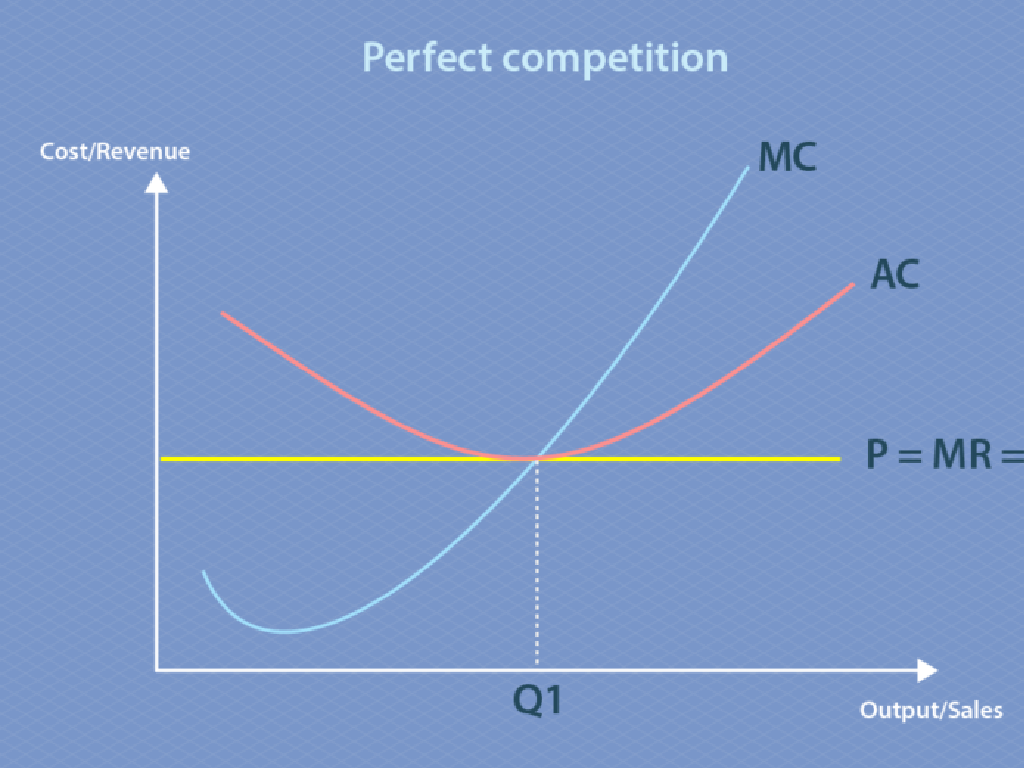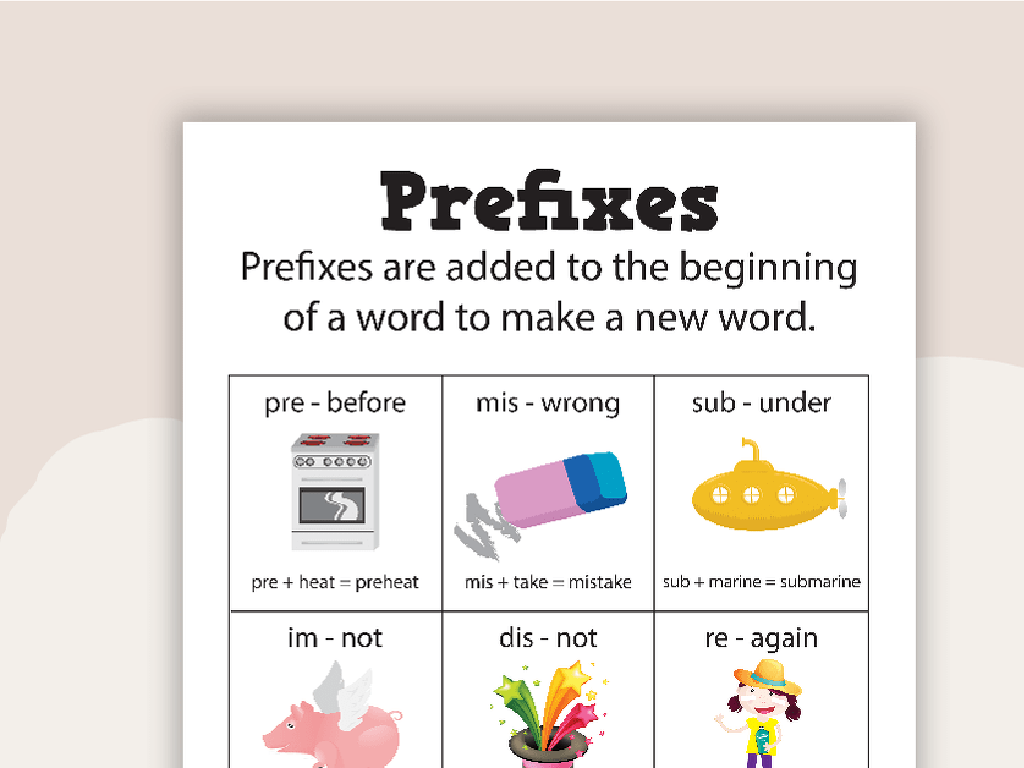Powers Of A Power: Variable Bases
Subject: Math
Grade: Eighth grade
Topic: Exponents
Please LOG IN to download the presentation. Access is available to registered users only.
View More Content
Introduction to Exponents: Powers of a Power
– Recap: What are exponents?
– Exponents represent repeated multiplication
– Base vs. Exponent
– Base: number being multiplied; Exponent: how many times
– Exponential growth in real life
– Populations, investments grow exponentially
– Applying powers to variable bases
– (x^m)^n = x^(m*n), where x is variable, m and n are exponents
|
Begin with a brief review of exponents, emphasizing their role in representing repeated multiplication. Clarify the terms ‘base’ and ‘exponent’, ensuring students understand the base is the number being multiplied, and the exponent indicates the number of times the base is used in the multiplication. Provide real-world examples of exponential growth, such as population growth or compound interest, to illustrate the concept’s relevance. Introduce the rule for powers of a power with variable bases, which is a critical foundation for algebra. Encourage students to practice this rule with different variables and exponents to solidify their understanding.
Powers of a Power: Understanding the Rule
– Define Powers of a Power
– When a power is raised to another power, e.g., (3^2)^4
– Rule: (x^m)^n = x^(m*n)
– Multiply exponents when a base is raised to two powers
– Visual explanation of the rule
– Use area models to show (x^2)^3 as a cube’s volume
– Application in solving problems
|
This slide introduces the concept of Powers of a Power, which is a fundamental topic in exponents. Begin by defining the concept, ensuring students understand that it involves taking an exponent to another exponent. Then, present the rule (x^m)^n = x^(m*n), which simplifies the expression by multiplying the exponents. To help students grasp why this rule works, use a visual explanation such as an area model or geometric representation. For example, show how (x^2)^3 can be visualized as the volume of a cube with sides of length x^2. Finally, demonstrate how this rule is applied in solving problems, which will be crucial for their understanding of exponents in algebra. Encourage students to practice this rule with various base numbers and exponents to solidify their understanding.
Powers of a Power with Variable Bases
– Understanding variable bases
– Variable bases in exponents are letters representing numbers, e.g., x^2, y^3
– Examples with variable exponents
– For instance, x^2 * x^3 = x^(2+3) = x^5
– Applying the Powers of a Power rule
– Use the rule (x^m)^n = x^(m*n) for variables, like (a^2)^3 = a^(2*3) = a^6
– Practice with variable bases
|
This slide introduces the concept of variable bases in the context of exponents, which is a fundamental part of algebra. Start by explaining that variables are symbols that represent numbers and can be used as bases with exponents. Provide clear examples to illustrate how exponents with the same base are multiplied. Emphasize the Powers of a Power rule, which states that when a power is raised to another power, the exponents are multiplied. Encourage students to practice this rule with different variable bases to solidify their understanding. The practice problems can include various bases and exponents to ensure students are comfortable with the concept.
Powers of a Power: Variable Bases
– Calculating (x^m)^n
– Multiply exponents when raising a power to a power: (x^m)^n = x^(m*n)
– Example: Simplify (x^2)^3
– (x^2)^3 = x^(2*3) = x^6
– Practice: Simplify (y^3)^4
– Apply the rule: (y^3)^4 = y^(3*4) = y^12
– Understanding exponent rules
|
This slide introduces the concept of taking a power to another power with variable bases, which is a fundamental aspect of working with exponents. Start by explaining the rule for multiplying exponents when a power is raised to another power. Provide the example (x^2)^3 to illustrate the process, showing that you multiply the exponents to simplify the expression. Then, give students a chance to practice with (y^3)^4, guiding them to apply the same rule. Emphasize the importance of understanding and memorizing this rule, as it is a key component of algebra and will be used in more complex problems. Encourage students to solve the practice problem and be ready to discuss their approach in the next class.
Common Mistakes: Powers of a Power
– Misapplying exponent rules
– Remember (x^m)^n is not x^(m+n) but x^(m*n)
– Overlooking base consistency
– Ensure the base remains the same when applying powers
– Confusing multiplication and exponents
– Multiplying bases is different from raising a power to a power
– Correcting errors with practice
|
This slide aims to address and correct common errors students make when working with powers of a power. Emphasize the importance of applying the correct exponent rules, such as (x^m)^n = x^(m*n), not x^(m+n). Stress the need for base consistency; the base should not change when an exponent is applied. Clarify the difference between multiplying bases and raising a power to a power, as this is a frequent source of confusion. Encourage students to practice these concepts with varied exercises to solidify their understanding and correct any misconceptions.
Class Activity: Simplifying Powers of a Power
– Group activity on expression simplification
– Present solutions and explain methods
– Each group will tackle different expressions like (x^3)^2 or (2y^4)^3
– Discuss different methods and answers
– Compare how groups approached the problem differently
– Reflect on the learning experience
– Share what was learned and how it can be applied
|
This slide sets up a collaborative class activity focused on simplifying expressions involving powers of a power. Divide the class into small groups and assign each group different expressions to simplify. After the groups work on their assigned problems, they will present their solutions to the class, explaining the steps they took to simplify the expression. Encourage a class discussion to explore the various methods used by different groups and the answers they obtained. This will help students understand that there can be multiple ways to approach a problem. Conclude with a reflection on the learning experience, emphasizing the importance of collaboration and communication in problem-solving. Provide guidance on how to simplify expressions and encourage students to think critically about their methods.
Homework: Mastering Powers of a Power
– Complete assigned practice problems
– Create your own exponent challenges
– Invent problems with variable bases, like (x^3)^2 or (2y^4)^3
– Utilize additional learning resources
– Explore textbooks, online videos, and math platforms for help
– Review and prepare for next class
|
For homework, students should complete the problems provided to reinforce their understanding of powers of a power with variable bases. Additionally, challenge them to create their own problems, which will help deepen their comprehension and allow them to apply what they’ve learned in a creative way. Remind students of the various resources available to them, including textbooks, educational websites, and online tutorial videos. Encourage them to review the material and practice further to be well-prepared for the next class. This will also help them to become more independent learners and gain confidence in their math skills.





